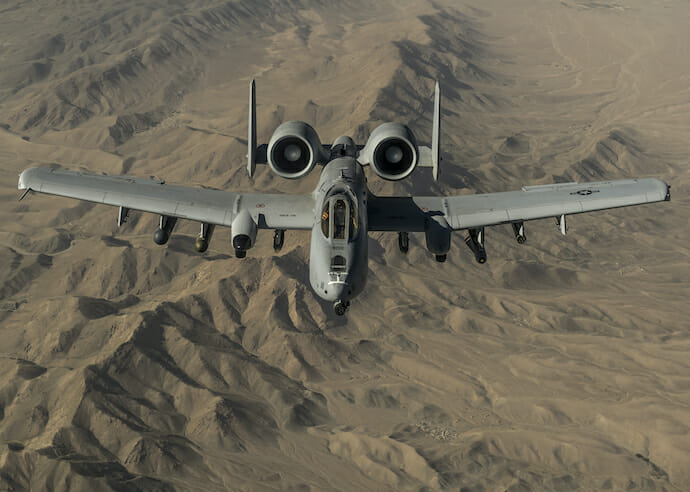
F-35: The UAE’s Lightning or a Lemon?
President Joe Biden on April 13 approved a $23 billion arms sale to the United Arab Emirates that his predecessor Donald Trump initiated, including the sale of 50 F-35 Joint Strike Fighters. While the deal makes strategic sense, with the F-35 the UAE has joined a wider debate over this stealth aircraft.
The arms deal buttressed Trump’s Abraham Accords, which opened official relations between Israel and the UAE. For Israel and the UAE, noted Middle East expert Walid Phares, “Israel will have access to a giant economy in the Gulf – a dream come true – and a partnership with the most advanced Arab country. The UAE will have access to Israel’s advanced technology, from agriculture to [its] military…cooperation will be a game-changer.” The two countries face common threats like Iran and Sunni extremists, and some are hoping that the F-35 will contribute particularly to UAE’s defense against Iran in the region. Unconfirmed reports that three Israeli F-35s in 2018 flew over Tehran without detection by Iranian air defenses are particularly enticing in this respect.
Yet the F-35 itself is highly controversial. Some have praised the F-35s advanced capabilities like stealth radar evasion capabilities as a necessary counter to the sophisticated capabilities of adversaries like China and Russia. Yet problems have plagued the F-35 since its development began in 2001, such that Georgetown University professor and army paratrooper veteran Sean McFate recently damned the F-35 as “obsolete junk” and a “flying lemon.”
For F-35 critics like McFate and Dan Grazier, the Jack Shanahan Fellow at the Project on Government Oversight, sticker shock alone raises alarm. “The F-35 is the most expensive weapon in history, with a projected lifetime cost of $1.7 trillion,” McFate has noted while the F-35 has hourly flying costs of about $44,000, although some see these costs decreasing over time. By comparison, older planes the F-35 is supposed to replace in the American military, like the A-10 and F-16, fly for about $20,000 per hour. As House Armed Services Committee Chairman Adam Smith (D-WA) recently noted, F-35 “sustainment costs are brutal,” which makes it unlikely the Pentagon will purchase 1,763 F-35s in the future.
As Time magazine’s Mark Thompson observed in 2013, these F-35s were supposed to serve in various variants for the Air Force, Marines, and Navy. This “flying Swiss Army knife” would be a multirole aircraft that could accomplish diverse missions like air-to-air fighting, bombing, and close air support. The resulting airplane was a “real-life example of the adage that a camel is a horse designed by a committee.

McFate has noted that the venerable A-10, introduced into service in 1977, remains the king of close air support. Depending on the variant, Grazier has observed, the F-35 carries only 182-220 rounds for its 25-millimeter cannon, while the A-10 carries over 1,100 shells for its 30-millimeter gun. Unlike the A-10, the “F-35 cannot maneuver adequately at the slow speeds that searching for concealed and camouflaged targets requires,” and, “completely unarmored and highly flammable,” the F-35 is vulnerable to small arms fire.
McFate also marvels that the “F-35 cannot dogfight, the crux of any fighter jet.” A 2015 mock dogfight between an F-35 and an F-16 over the Pacific Ocean near California’s Edwards Air Force Base dramatized this point. The F-16 consistently outmaneuvered the F-35, even though two bulky drop tanks aerodynamically disadvantaged the F-16 against the F-35 without any attached ordinance. Compared to planes like the F-16, critics have noted that the “notorious gas-guzzler” F-35 also has limited range.
Whatever capabilities the F-35 does have often remained grounded, for the “F-35 is a hanger queen,” as McFate has noted. The F-35 still struggles to meet its goal mission-capable rate, the percentage of aircraft that can fulfill at least one mission. As of January, only 69 percent of F-35s meet this goal, while the military has a longstanding 80 percent goal.
Grazier has examined the inherent challenges stealth capabilities present in repairing a plane like the F-35. “It takes much longer to make some repairs to stealth aircraft because it takes time to remove low-observable materials, fix what is broken, and then repair the stealth skin.” For example, some F-35 adhesives for stealth materials can take a full week to completely dry.
The F-35s advanced systems have also suffered from numerous software bugs, as the F-35 has eight million lines of code, more than six times the F-18, an “inviting target for enemy cyber-warriors,” Grazier has noted. In addition, F-35s maintenance and logistics software has 24 million code lines, which enabled numerous failures in the F-35s Autonomic Logistics Information System. In 2020 the Pentagon scrapped ALIS and committed $500 million to build its replacement, the Operational Data Integrated Network.
The F-35 has suffered numerous other woes, like its own engine afterburners inflicting melting damage. “Nearly every time the engineers solve one problem, a new one is discovered. The F-35 still has 871 unresolved deficiencies, only two fewer than last year,” Grazier reported in March on a plane that was supposed to be operational in 2012. “As the F-35 enters its twentieth year, program officials have delayed the important full-rate production milestone indefinitely” and the F-35 “remains in every official sense nothing more than a massively expensive prototype.” Corresponding to this “complete boondoggle,” Christopher Miller, acting defense secretary in the final days of the Trump administration, called the F-35 “a piece of …”
Now Air Force leaders have “all but admitted what critics have been saying for many years,” recently noted Forbes magazine aviation analyst David Axe. The F-35 “is too expensive and unreliable for hard, day-to-day use” in America’s various military branches. While the Air Force has purchased 250 F-35s, it is now considering other alternatives to replacing about 1,000 aging F-16s, like a new lightweight fighter.
The recent delivery of the first F-15EX, an updated version of this fighter introduced in 1976, to the Air Force indicates current American airpower thinking. In a technological “high-low mix” the F-35 would fill strategic niche roles with its high technologies while less sophisticated, often older aircraft designs would remain airpower workhorses. “You don’t drive your Ferrari to work every day, you only drive it on Sundays,” Air Force Chief of Staff Gen. Charles Brown Jr. recently stated. The F-35 “is our ‘high end’ [fighter], we want to make sure we don’t use it all for the low-end fight.” Along with other F-35 users, the UAE will have to strike similar balances in a dangerous world.

